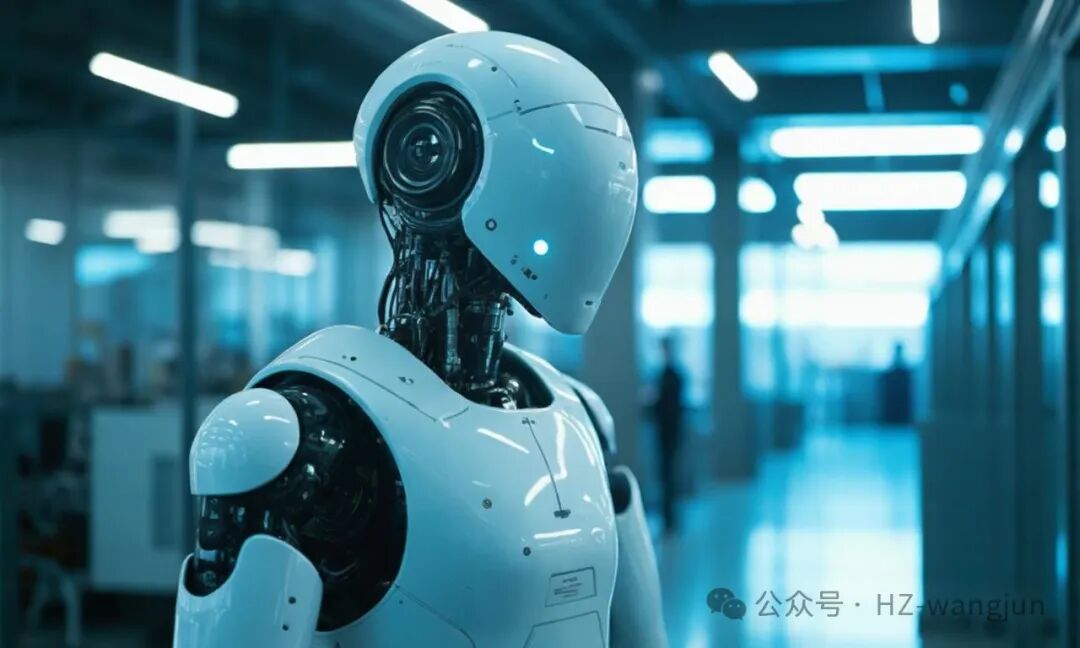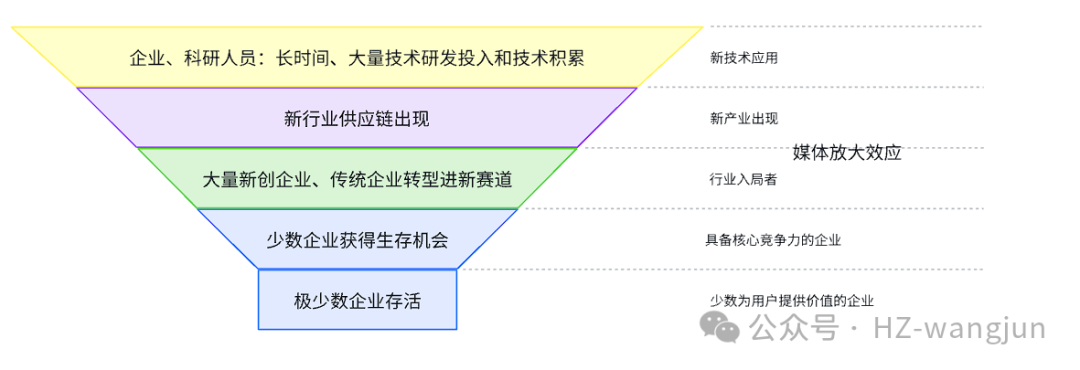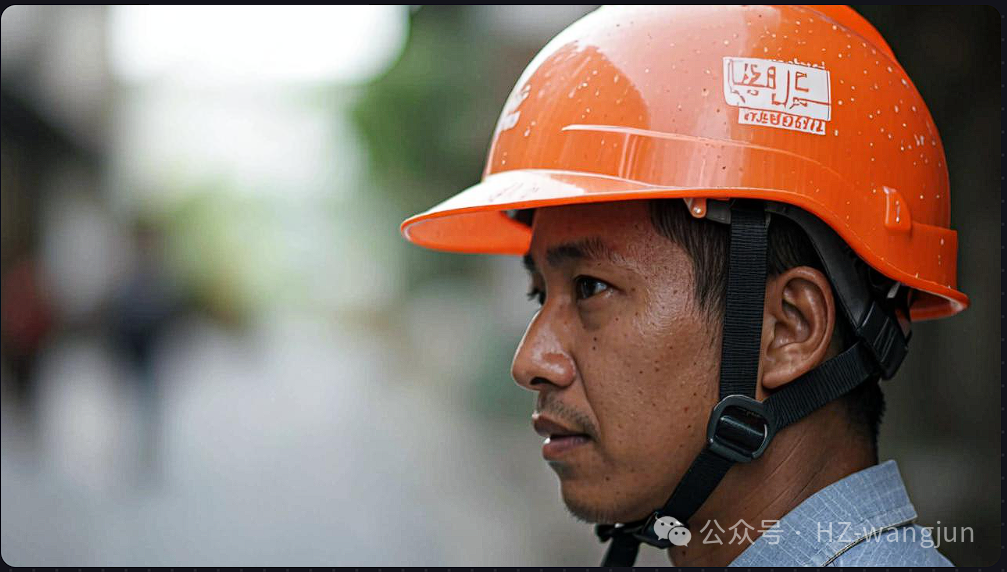My judgment is that it has not; the development of AI and robotics has already gone through the bubble period and has entered a normal development stage.
- Development Model of New Technologies:
The application of new technologies – giving rise to new industries/sectors – media amplifying technological achievements – the industry returning to calm – rational enterprises continue to focus on developing core competencies – new technologies are taking root and continuously developing in various traditional industries. The previous development model of e-commerce/internet/O2O was similar:With the development and accumulation of technology (internet technology, especially web technology and mobile internet technology, as well as the development of smartphones), the comprehensive effect of commercial needs and the upward trend of the market economy led to the emergence of e-commerce platforms that meet multiple demands, along with a large number of e-commerce ecosystem enterprises.With the media’s amplification effect praising internet technology, various internet+ entrepreneurial companies emerged, aiming to revolutionize traditional enterprises (internet+finance, internet+automotive after-sales market), and after the initial excitement, very few of those companies are still operational today.2. Observing the Development of AI and RoboticsFrom the appearance of the Yushu robot at the Spring Festival Gala to the emergence of DeepSeek during the Spring Festival, AI and robotics have brought vitality to the sluggish domestic market. The two companies’ location, Hangzhou, has also enjoyed a moment of glory, with media everywhere asking, “Why can’t XX city produce six little dragons?”; however, by May, the media’s momentum had basically dissipated, and some showrooms explicitly stated they no longer wanted the Yushu robot, likely because it had become too common and lost its novelty. Human nature is curious and tends to favor the new while discarding the old!Looking back, the general development direction of AI technology is: AI large models (primarily chat) – AI agents (agents connected to various different applications of large models) – RAG (represented by knowledge bases) – MCP/A2A multi-application combinations — super intelligent application combinations;The AI large model will serve as the underlying technology providing power (of course, the current architecture of large models needs to be upgraded or replaced, as the current architecture consumes too much computing power/energy and is not as intelligent as imagined). The economic benefits will still rely on various AI applications, embedding AI technology into traditional systems to serve existing businesses; (At a recent conference, Baidu also mentioned that while they are working on AI and autonomous driving, their strategic vision is quite good, but they just can’t produce good products and services 🤭)The forms and capabilities of robots are also continuously evolving and improving: from the early showroom reception robots and delivery robots in hotels/restaurants to now robots that can dance, do flips, ride bicycles, and assist the elderly; ultimately, there may be robots + mechanical arms for mass application in factories, as well as applications in high-frequency life scenarios, such as dishwashing robots;3. AI and Robotics are Here to Replace HumansThe development and application of AI and robotics represent a new technological revolution/industrial revolution. Unlike previous industrial revolutions, such as the steam revolution and the electrical revolution, which created new industries, new production processes, and new supply chain systems, thus increasing the employment population; the application of AI and robotics will not create new industries or supply chains, but will merely upgrade and iterate existing software and hardware industries and supply chains. Moreover, with the continuous improvement of automation technology, it will shorten or reduce existing supply chain links, leading to a significant reduction in employment positions and population.How to address the issue between new technology and employment requires individuals/organizations to actively learn new technologies and embrace change, while also necessitating adaptive adjustments from the entire social organization to address the employment and survival issues of a large number of unemployed individuals.
The previous development model of e-commerce/internet/O2O was similar:With the development and accumulation of technology (internet technology, especially web technology and mobile internet technology, as well as the development of smartphones), the comprehensive effect of commercial needs and the upward trend of the market economy led to the emergence of e-commerce platforms that meet multiple demands, along with a large number of e-commerce ecosystem enterprises.With the media’s amplification effect praising internet technology, various internet+ entrepreneurial companies emerged, aiming to revolutionize traditional enterprises (internet+finance, internet+automotive after-sales market), and after the initial excitement, very few of those companies are still operational today.2. Observing the Development of AI and RoboticsFrom the appearance of the Yushu robot at the Spring Festival Gala to the emergence of DeepSeek during the Spring Festival, AI and robotics have brought vitality to the sluggish domestic market. The two companies’ location, Hangzhou, has also enjoyed a moment of glory, with media everywhere asking, “Why can’t XX city produce six little dragons?”; however, by May, the media’s momentum had basically dissipated, and some showrooms explicitly stated they no longer wanted the Yushu robot, likely because it had become too common and lost its novelty. Human nature is curious and tends to favor the new while discarding the old!Looking back, the general development direction of AI technology is: AI large models (primarily chat) – AI agents (agents connected to various different applications of large models) – RAG (represented by knowledge bases) – MCP/A2A multi-application combinations — super intelligent application combinations;The AI large model will serve as the underlying technology providing power (of course, the current architecture of large models needs to be upgraded or replaced, as the current architecture consumes too much computing power/energy and is not as intelligent as imagined). The economic benefits will still rely on various AI applications, embedding AI technology into traditional systems to serve existing businesses; (At a recent conference, Baidu also mentioned that while they are working on AI and autonomous driving, their strategic vision is quite good, but they just can’t produce good products and services 🤭)The forms and capabilities of robots are also continuously evolving and improving: from the early showroom reception robots and delivery robots in hotels/restaurants to now robots that can dance, do flips, ride bicycles, and assist the elderly; ultimately, there may be robots + mechanical arms for mass application in factories, as well as applications in high-frequency life scenarios, such as dishwashing robots;3. AI and Robotics are Here to Replace HumansThe development and application of AI and robotics represent a new technological revolution/industrial revolution. Unlike previous industrial revolutions, such as the steam revolution and the electrical revolution, which created new industries, new production processes, and new supply chain systems, thus increasing the employment population; the application of AI and robotics will not create new industries or supply chains, but will merely upgrade and iterate existing software and hardware industries and supply chains. Moreover, with the continuous improvement of automation technology, it will shorten or reduce existing supply chain links, leading to a significant reduction in employment positions and population.How to address the issue between new technology and employment requires individuals/organizations to actively learn new technologies and embrace change, while also necessitating adaptive adjustments from the entire social organization to address the employment and survival issues of a large number of unemployed individuals.